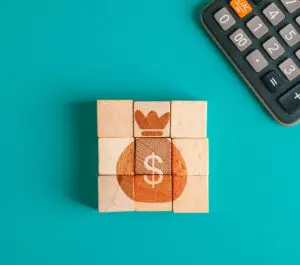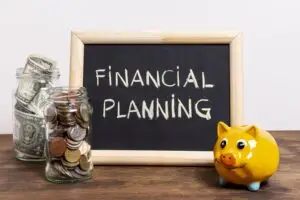Have you ever wondered how some people manage to stay financially calm during emergencies while others struggle? The secret often lies in one simple but powerful tool: an emergency fund. In today’s unpredictable world—with inflation, job instability, and unexpected expenses—having a financial cushion is more important than ever. But what if you’re living paycheck to paycheck? Is it even possible to save? The answer is a resounding yes, and this guide will show you practical, doable steps to build and maintain an emergency fund, no matter your income.
Why an Emergency Fund Matters in 2025

Why is an emergency fund so crucial today? We live in a time of economic flux. Inflation rates continue to impact the cost of living, job security is less predictable, and unexpected expenses—from car repairs to medical bills—can hit hard.
Without a safety net, many end up relying on credit cards or loans with high interest, which often worsens financial stress. That’s where an emergency fund comes in: it offers peace of mind and a buffer to handle life’s surprises without falling into debt.
If you’re a small business owner, freelancer, or simply want to be prepared, knowing where to turn for quick capital is important too. For example, if you ever find yourself needing fast funding to cover unexpected business costs, explore quick funding solutions for unexpected expenses that can help keep your operations afloat while your emergency fund grows.
How Much Should You Save?
Experts often recommend saving at least three to six months’ worth of living expenses. But if that feels overwhelming, start by setting a realistic, smaller target—say $500 to $1,000. Even this amount can cover many common emergencies and give you a sense of security.
Think about your monthly essentials: rent, utilities, food, and transportation. Multiply those by how many months you’d like to cover, then break that number down into manageable chunks for weekly or monthly savings.
If you’re a small business owner, it’s worth considering your business’s cash flow too. Instead of relying on credit cards during emergencies, consider equipment financing as a strategic alternative to credit cards for necessary purchases, which can preserve your emergency funds for true crises.
Start Small: Saving $5–$10 a Week
Saving large sums can seem impossible on a tight budget, but small steps count. Starting with $5 or $10 a week builds momentum and habit. Over a year, saving just $10 weekly adds up to $520—enough for a decent emergency cushion.
Try automating your savings so you don’t have to think about it. Many banking apps allow you to set up automatic transfers to a separate savings account. Apps like Digit, Qapital, or even your bank’s app can round up your purchases and save the spare change. This “set it and forget it” method removes temptation and helps your fund grow effortlessly.
If you want to maximize your savings tools, it’s also wise to understand the importance of secure banking verification in financial apps. Secure verification ensures your savings automation tools keep your money safe and transactions private.
Cut These 5 Everyday Costs to Save Faster

Looking for ways to free up money for your emergency fund? Try trimming these common expenses:
- Coffee and Dining Out: Brewing coffee at home can save $3-$5 daily. Packing lunch instead of eating out also adds up.
- Subscription Services: Review streaming, magazine, and app subscriptions. Cancel ones you rarely use.
- Impulse Shopping: Wait 24 hours before non-essential purchases. Often, the urge passes.
- Utilities: Switch off lights and unplug devices when not in use. Consider energy-efficient bulbs.
- Transportation: Use public transit, carpool, or bike when possible.
Every dollar saved accelerates your emergency fund. Meanwhile, if you ever face a situation where you need quick access to money, but your fund isn’t quite ready, you can utilize our merchant cash advance calculator for better financial planning to understand how cash advances work and avoid overpaying for funding options.
Best Apps to Automate Your Savings
In today’s tech-driven world, many apps help automate saving without feeling like a chore. Here are some popular choices:
- Digit: Analyzes your spending habits and saves small amounts when you can afford it.
- Qapital: Uses customizable rules like “save $1 every time I buy coffee.”
- Acorns: Rounds up your everyday purchases and invests the spare change.
- Chime: Allows automatic transfers to a high-yield savings account.
These apps help maintain consistency and take the emotional burden out of saving. Always choose apps that prioritize security—because protecting your money is paramount. For that, it’s good to understand the importance of secure banking verification in financial apps.
Where to Keep Your Emergency Fund (Not Under Your Mattress)
Stashing cash at home might seem tempting but it’s risky—fire, theft, or loss can wipe it out. Plus, you miss out on earning interest.
Instead, consider:
- High-Yield Savings Accounts: Earn better interest than traditional savings.
- Money Market Accounts: Often offer check-writing privileges with decent interest.
- Certificates of Deposit (CDs): Higher interest, but funds are locked for a period.
Choose accounts that offer quick access without penalties. The goal is liquidity combined with safety.
If you run a business and need more than just savings for emergencies, explore quick funding solutions for unexpected expenses to complement your fund.
Emergency Fund vs. Credit Cards: Know the Difference
When unexpected expenses come up, credit cards may seem like a quick fix. But they often carry high interest and can spiral into debt if unpaid promptly.
An emergency fund is money you’ve saved to cover those costs without borrowing. It gives you control and avoids interest charges.
For business owners, it’s important to distinguish emergency savings from business credit. If you need equipment or other investments, consider equipment financing as a strategic alternative to credit cards. This approach keeps your credit cards free for smaller purchases and emergencies.

Real Stories: How a $500 Emergency Fund Saved the Day
Consider Ava, a freelancer who struggled to save. When her laptop crashed, she had $500 in her emergency fund. That money covered the repair costs, allowing her to continue working without interruption.
Or Mike, a retail store owner who faced an unexpected tax bill. His emergency fund helped cover the payment without resorting to high-interest loans.
These real-life examples highlight how even a small fund can prevent financial setbacks and stress.
If your emergency fund isn’t quite ready and you run a business, you might find value in tools like our merchant cash advance calculator, helping you understand your funding options wisely.
Keep It Growing: Tips for Staying Consistent
The hardest part about building an emergency fund is sticking with it. Here are tips to keep your momentum:
- Set Milestones: Celebrate every $100 or $500 saved.
- Automate Savings: Let apps or your bank handle transfers.
- Adjust Regularly: Increase savings as your income grows.
- Stay Motivated: Remember why you started—financial peace.
- Review Budget: Regularly check where you can cut costs further.
And if you ever need extra support during tough times, explore quick funding solutions for unexpected expenses to stay afloat without breaking your fund.
Conclusion
Building an emergency fund on a tight budget is absolutely achievable with small, consistent steps. By understanding how much to save, cutting everyday costs, leveraging technology, and knowing where to keep your money safe, you’ll be on your way to financial security. Plus, by avoiding high-interest credit and having quick access to funding alternatives, you create a strong financial safety net.
Remember: The peace of mind you get from even a small emergency fund is priceless. Start today—your future self will thank you.






